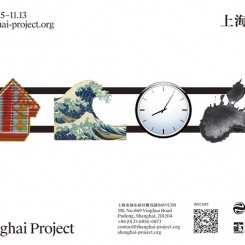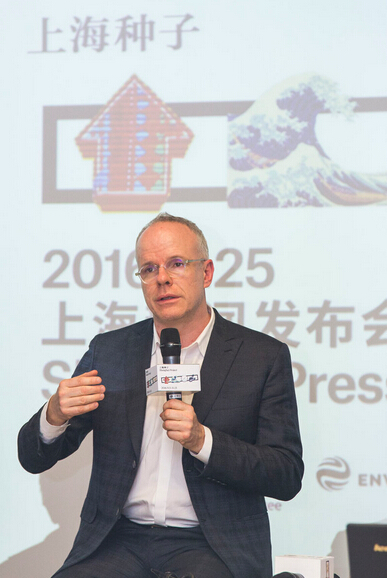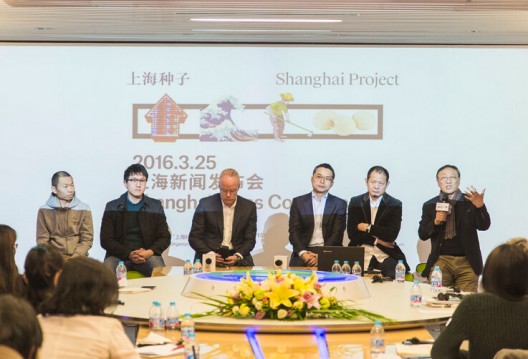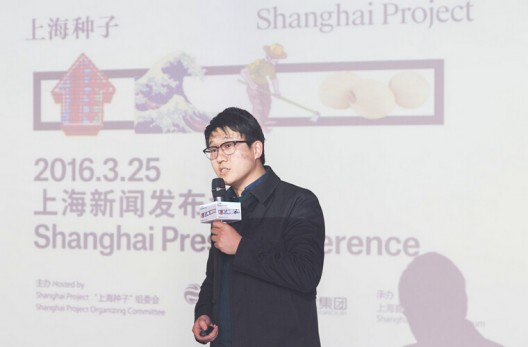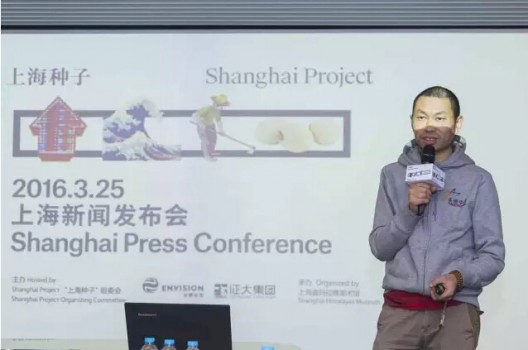[Press Release]
Yongwoo Lee & Hans Ulrich Obrist announced as Co-Artistic Directors of the inaugural edition of the Shanghai Project: “2116”
• Leading cultural thinkers from East and West announced as Artistic Directors
• Radical new structure for an international cultural event is proposed, with participants to be designated as “researchers”
• “Sustainable Future” set as theme for the first edition
• Five fundamental areas of content planned across the arts, humanities and sciences, underscoring event’s highly interdisciplinary approach
• Open Call is announced in association with Simon Castets and Hans Ulrich Obrist’s 89plus research project
The Shanghai Project |上海种子 is pleased to announce Yongwoo Lee, Director of Shanghai Himalayas Museum, together with Hans Ulrich Obrist, Co-Director of the Serpentine Galleries, London, as Co-Artistic Directors for the inaugural edition. Entitled “2116,” the theme of this first iteration of the Shanghai Project looks ahead to the 22nd century and questions the prospect of a “sustainable future.”
The Shanghai Project |上海种子 is an ideas platform which takes as its starting point the notion of a culture and knowledge “emporium,” a shared time and space for people to gather, procure, and exchange culture and knowledge. Convening people from China and abroad, participants, or “researchers”, will query and experiment with the historic notion of a trading post and the utopian proposal of department stores as the “one-stop-shop” containing “something for everyone” whereby opportunities for spontaneous meeting and exchange allow for unique moments of engagement and innovation. The platform, or “emporium,” will form the basis for cross-cultural interventions, exhibitions, public art installations, commissioned architectural structures, public programs, and an open call to take place in the Shanghai Himalayas Center and various locations around Shanghai from September 5 – November 13, 2016.
2116
In 100 years, according to a recent report by Climate Central, if no action is taken to curb emissions and the Earth continues to warm at its present rate, 76% of greater Shanghai’s current population live in areas that will be submerged underwater1. Equally startling is the projection that if current policies and heavy migration flows continue over the next 15 years, nearly 70% of China’s population will live in cities2. How will human saturation within urban Chinese centers impact not only the environment, but also social and economic systems? As futurists predict and invent new wonder if the inevitability of extinction renders such efforts moot. We might ask instead: sustainability for whom?
As if the title of a science fiction novel, “2116” is an arbitrary placeholder, a substitute numeral for a time and place in the fantastically distant future, a vehicle through which we are free to experiment. Yet, the 22nd century is close enough that the future can be measured and predicted, conditioned by what we know and what exists today. The Shanghai Project invites researchers to speculate on this both distant and proximate future and the many valences of sustainability. The provocation to imagine such futures and to think critically about sustainability — beyond an ecological notion — is at once onerous and emancipatory. As such, it will be commanded not just by scientists, futurists, and science fiction novelists, but also by artists, filmmakers, performers, musicians, designers, architects, writers, poets, philosophers, historians, economists, geographers, sociologists, anthropologists, journalists, doctors, lawyers, engineers, hackers, bloggers, activists, and the people of Shanghai.
Interdisciplinary Approaches + (Root) Researchers
While the concept of interdisciplinarity itself is not new and is de facto encountered and practiced in daily life, the Shanghai Project foresees the presentation of interdisciplinary and multidisciplinary projects as a way of engaging audiences that have not previously participated in discourses generated within cultural contexts. It is through interdisciplinarity that we attempt to challenge pre-conceptions of what is “culture” and what is “practice.”
The Shanghai Project will designate all participants as “researchers,” all of whom will be chosen from five fundamental disciplinary frameworks, including Visual Art; Architecture, Design, and Communication; Performance, Moving Image and Sound; Humanities and Social Sciences; and Science, Technology and Ecology. Anchoring the Shanghai Project is a new “root researcher” system. Inviting 8 -10 individuals from various disciplines, these “root researchers” will in turn build interdisciplinary teams. Each of these teams will produce a publication to be launched at the conclusion of the Shanghai Project, as well as a new artwork, film, didactic display, or other response to be installed during the project’s opening. In addition to the Root Researchers, another 30 -40 individual Researchers will produce public art installations, participate in public programming or commit existing works to the exhibition.
Qidian 奇点: An Open Call
As an independent module of the Shanghai Project, Qidian 奇点 is dedicated to the discovery of young thinkers, do-ers, and makers across China, providing a unique platform they can network and share ideas with a wider international audience. For its inaugural edition, Qidian 奇点 collaborates with the 89plus, a long-term international research project co-founded by Hans Ulrich Obrist and Simon Castets that investigates the generation of innovators born in or after 1989, to bring together creative individuals of China’s jiulinghou (post- 90s) generation through a nationwide open call. Selected candidates will be invited as Researchers to the Shanghai Project to respond to the theme “2116,” and their proposed works will form the basis of an exhibition with projects by other 89plus participants from around the world.
